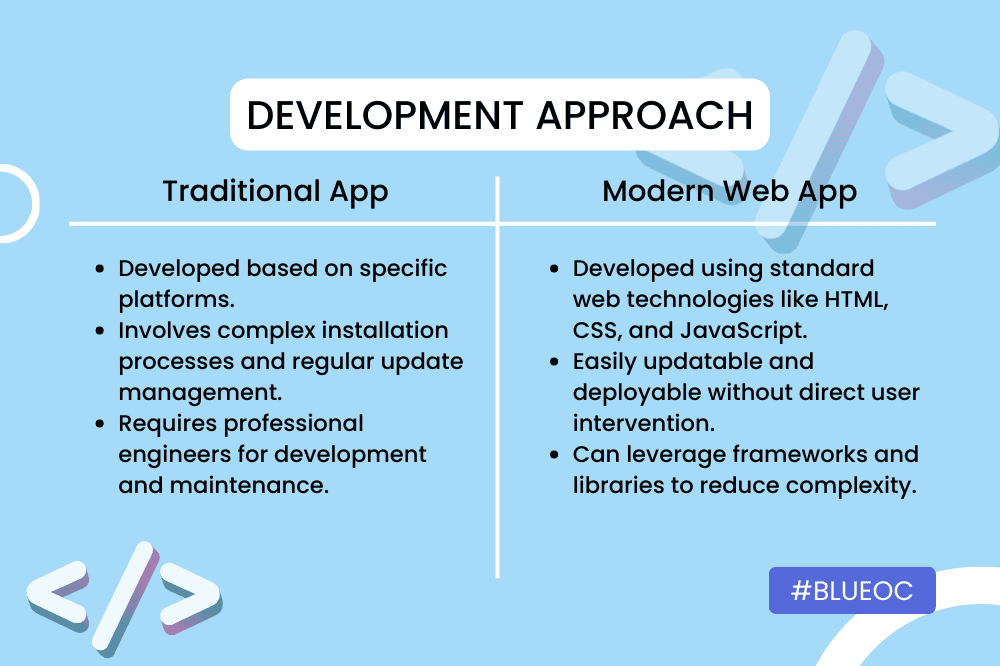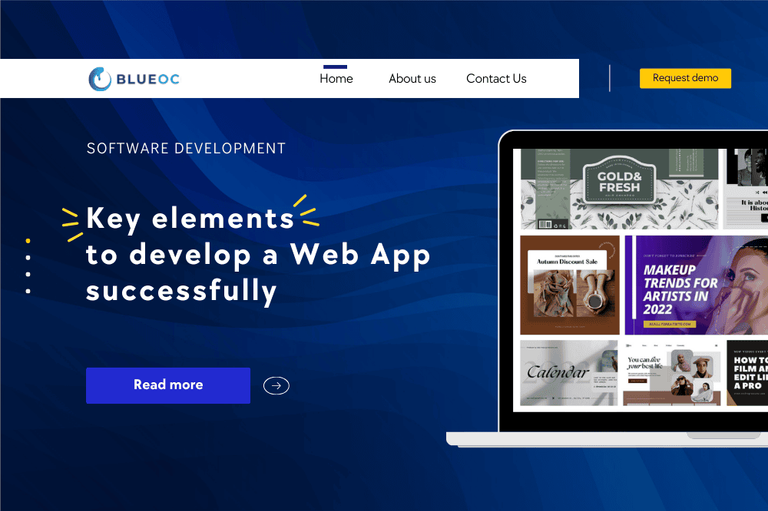
Web application development has become an integral part of modern technology. However, choosing between traditional and modern web app development can pose some challenges. This article aims to shed light on these challenges and provide approachable solutions.
Traditional Applications are software installed and run directly on a user's device, typically a computer or mobile device. They often require installation and periodic updates.
Modern Web Applications are software that users can access through a web browser without the need for direct installation. They are typically built using web technologies such as HTML, CSS, and JavaScript and can run on various devices.

In software development, your work impacts the usage and maintenance of apps. Traditional applications are often developed for specific platforms such as Windows, iOS, or Android, necessitating different versions tailored to each platform's requirements. These applications typically involve intricate installation processes and require professional engineers for development and ongoing maintenance. Also, updating old apps can be difficult, needing users to download and install patches or new versions manually.
Traditional applications excel in high performance on specific devices and fully utilize operating system features. However, they demand regular installation and maintenance, limiting mobility and flexibility.
Contrastingly, modern web applications embrace a more streamlined approach, utilizing standard web technologies like HTML, CSS, and JavaScript. Developed with compatibility across various devices and operating systems in mind, modern web applications offer unparalleled flexibility and accessibility. With the ability to update and deploy seamlessly without direct user intervention, they empower businesses to deliver dynamic experiences to their users. Using frameworks and libraries helps developers simplify development, increase efficiency, and focus on adding valuable features and functions.
Modern web applications offer accessibility across internet-connected devices and facilitate easy, rapid updates. Nevertheless, they may suffer performance degradation with poor internet connectivity and have limited access to certain system features.
Traditional Applications
Modern Web Applications
Traditional Applications
Languages: C++, Java, Swift, Objective-C for desktop applications; Java, Kotlin, Swift for mobile applications.
Scripting: Limited use of scripting languages.
Modern Web Applications
Languages: HTML, CSS, JavaScript for front-end; Node.js, Python, Ruby, Java, PHP … for back-end.
Frameworks: Angular, React, Vue.js for front-end; Express.js, Django, Flask for back-end.
Traditional Applications
Traditional applications are evolving, integrating web-based elements or transitioning to hybrid models to stay relevant. Challenges include adapting to technology shifts and meeting the demand for enhanced mobility.
Modern Web Applications
Modern web applications witness trends like continuous integration, Progressive Web Apps (PWAs), and serverless architectures. Challenges encompass ensuring robust security and optimizing performance across diverse user environments.
Microsoft Office 365
Microsoft Office, usually on devices, is now Office 365. Users can use Word and Excel from a web browser instead of installing them.
Adobe Creative Cloud
Adobe has successfully transitioned many of its creative applications, such as Photoshop and Illustrator, into web-based versions, providing increased mobility and usability.
While traditional applications continue to have relevance, especially in specific domains, modern web applications dominate the current technology landscape. The choice between traditional applications and modern web applications depends on specific user needs and project requirements. Both options have pros and cons. The choice depends on the project or business needs and goals.
Many businesses contemplate building a web application but may grapple with deciding between traditional and modern approaches. BlueOC, providing IT outsourcing in Vietnam, stands as a beacon of expertise, offering comprehensive consulting and implementation services for web applications across diverse industries. We assist clients in web development by using our knowledge and skills to help them overcome challenges with assurance. If you are looking for support in a new project or existing application, let's connect to BlueOC.


